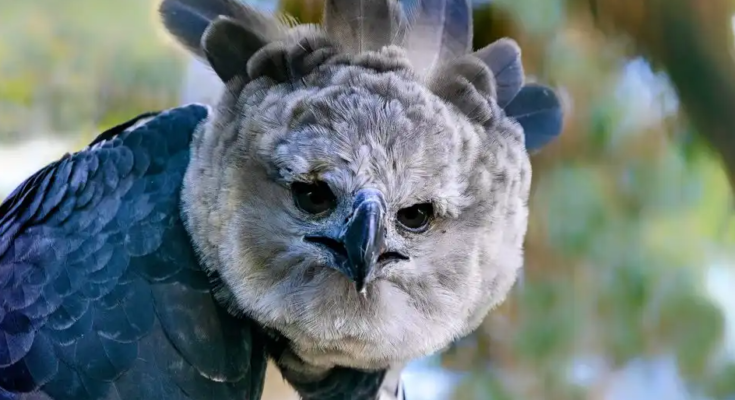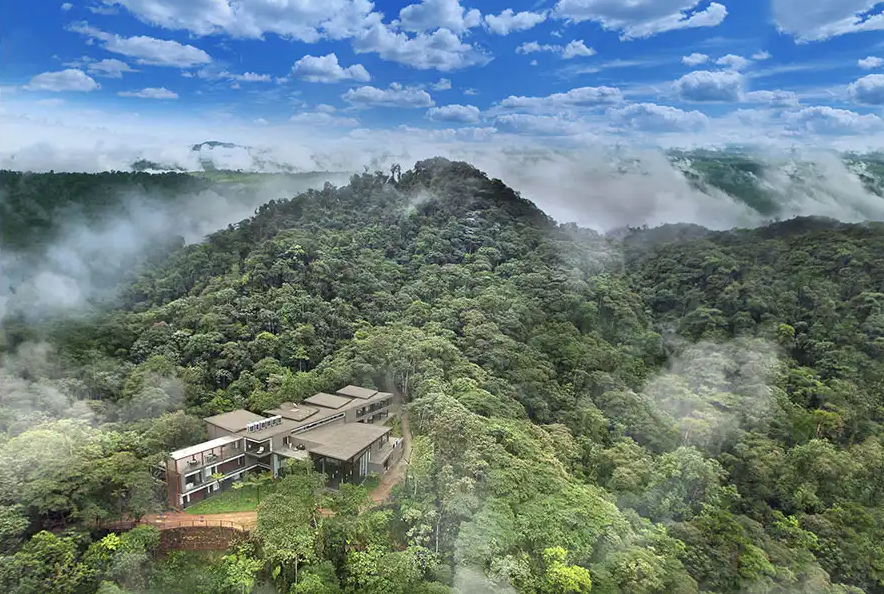This blog will highlight 15 Amazon Rainforest Animals. On future trips to South America
The expansive Amazon Rainforest, renowned as Earth’s largest and most biodiverse tropical rainforest, stretches across an area totaling 5.5 million square kilometers across nine nations. It extends through Brazil, Peru, Colombia, Ecuador and more. The Amazon’s unrivaled natural diversity truly astounds, housing over 40,000 plant varieties, 1,300 bird types, 2,200 fish species, and an impressive 430 mammal kinds.
This blog will highlight 15 Amazon Rainforest Animals. On future trips to South America, watch for these fascinating beings. From the majestic big cats and vibrant parrots to the leisurely sloths and formidable serpents, the unique traits of these forest residents are sure to leave one in wonder.
Jaguar
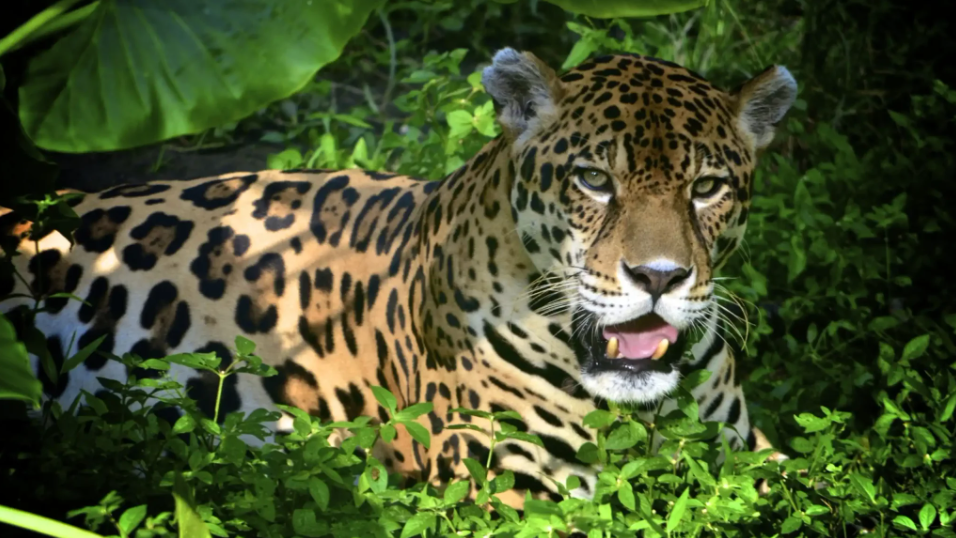
The largest feline living in Central and South America is the jaguar, more significant than the mountain lion, and globally ranks third biggest, only beaten by tigers and African lions. These amazing animals have a coat of vivid orange covered in black rosettes, perfectly disguising them amid dense foliage. Jaguars are typically solitary animals known for their powerful bite and remarkable hunting abilities. Their natural homes include parts of Brazil, Peru, and Ecuador within the tropical rainforests.
Capybara

The capybara is the most impressive animal, weighing up to 66 kilograms, and is the largest rodent in the world. These social creatures often join groups together, numbering around 20 individuals. Capybaras are exceptionally skilled swimmers, able to remain below the water’s surface for approximately five minutes – a trait allowing them to evade detection. Their native lands commonly involve the Amazon rainforest, with a sizable community in Brazil, Peru, and Colombia.
Toucan
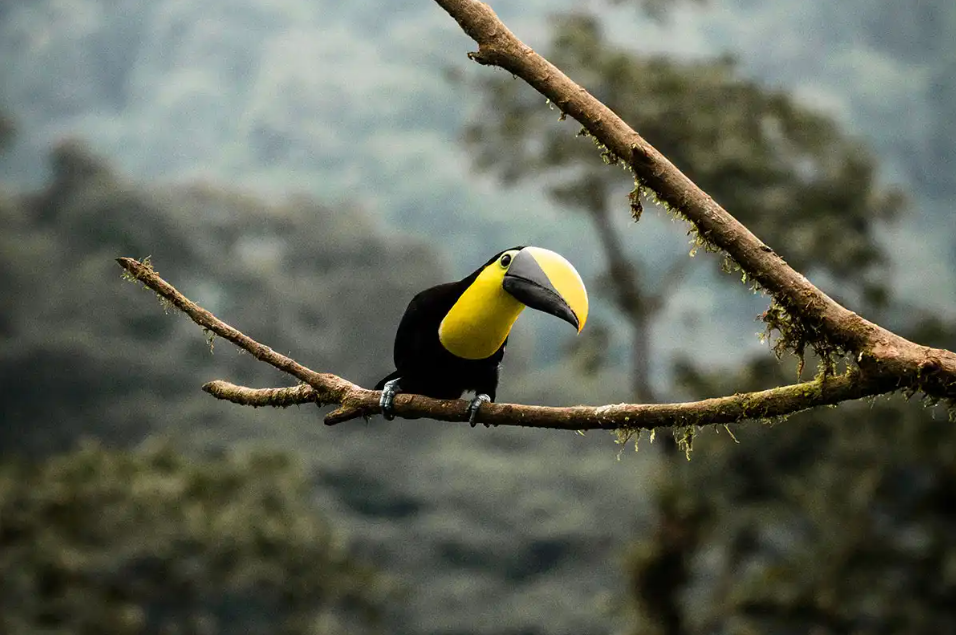
The toucan is a colorful avian known for its lengthy curved beak, extending to a remarkable span of up to twenty centimeters. These fowls employ their sizable beaks not solely to enter sustenance but also to control their body temperature. In contrast to widespread conception, toucans usually could be more expert fliers and often journey by hopping from department to department. They are prevalent throughout the Amazon rainforest, particularly in areas with fruit timber. Toucans are typically noticed in Brazil, Peru, Colombia, and Ecuador.
Macaw
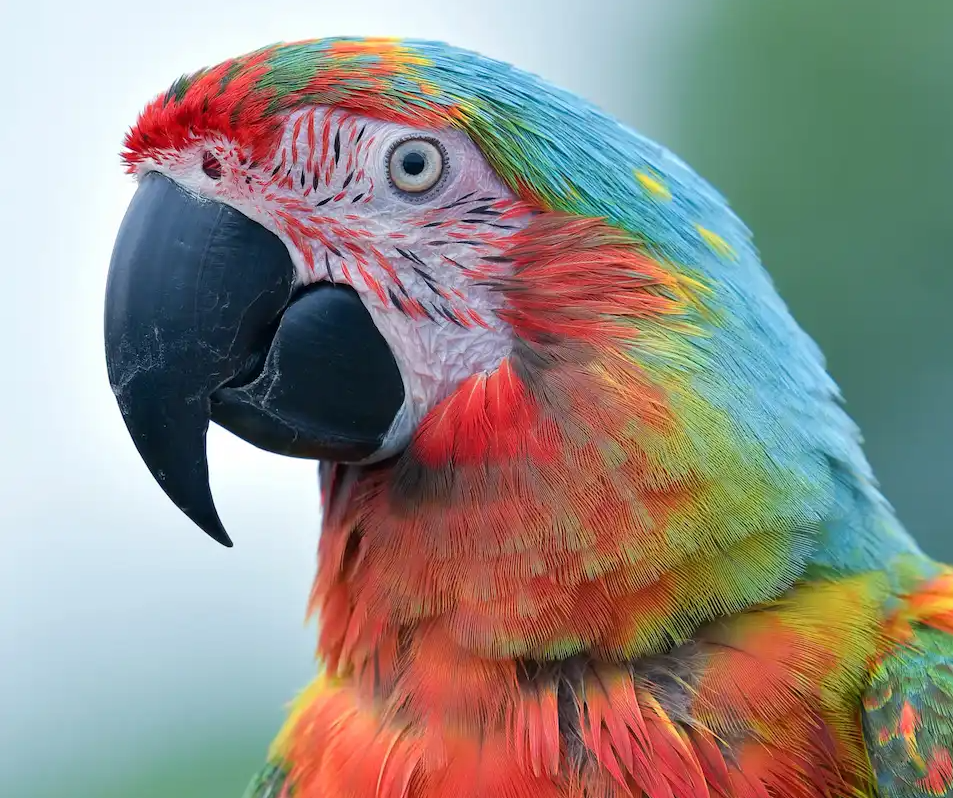
The macaw is a gorgeous avian with vibrant plumage and an expansive wingspan, sometimes reaching a meter across, rendering it one of the more recognizable denizens of the Amazonian rainforest. These fowls possess a riveting and vivid appearance together with intelligence, retaining the facility to mimic human utterances and other sounds. Macaws naturally exhibit a sociable character that forms enduring paired bonds. Commonly nesting high amidst the lush rainforest canopy, their loveliness appears set against lush vegetation at a remove.
Anaconda
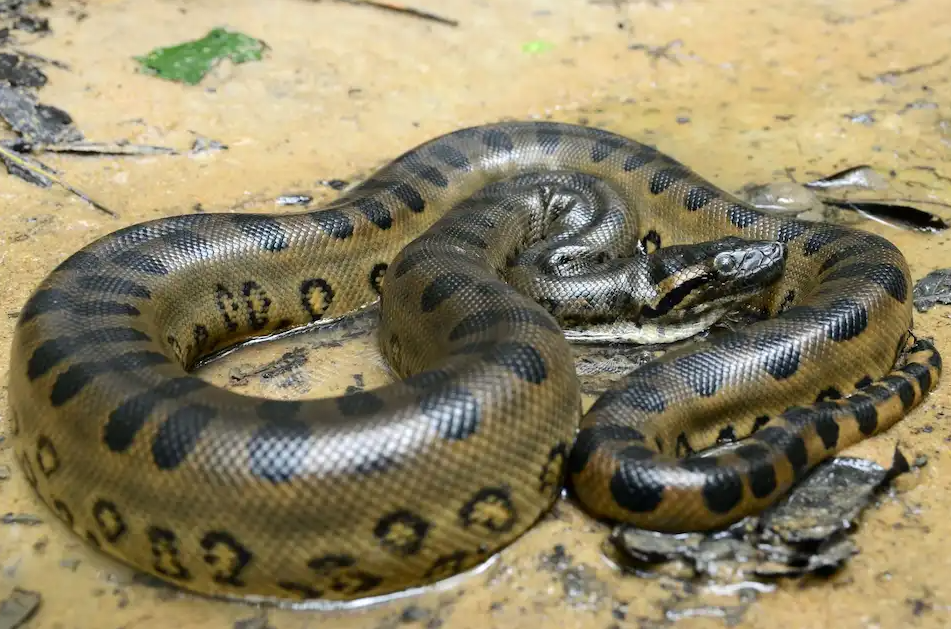
The giant snake known as the anaconda is renowned as one of Earth’s largest, reaching nearly 30 feet and weighing over 550 pounds. These formidable creatures are exceptional swimmers, capable of remaining submerged underwater for up to 10 minutes. They are typically found near sources of water, where they stealthily pursue their prey. The natural habitats of anacondas primarily include regions such as Brazil, Peru, and Colombia.
Sloth
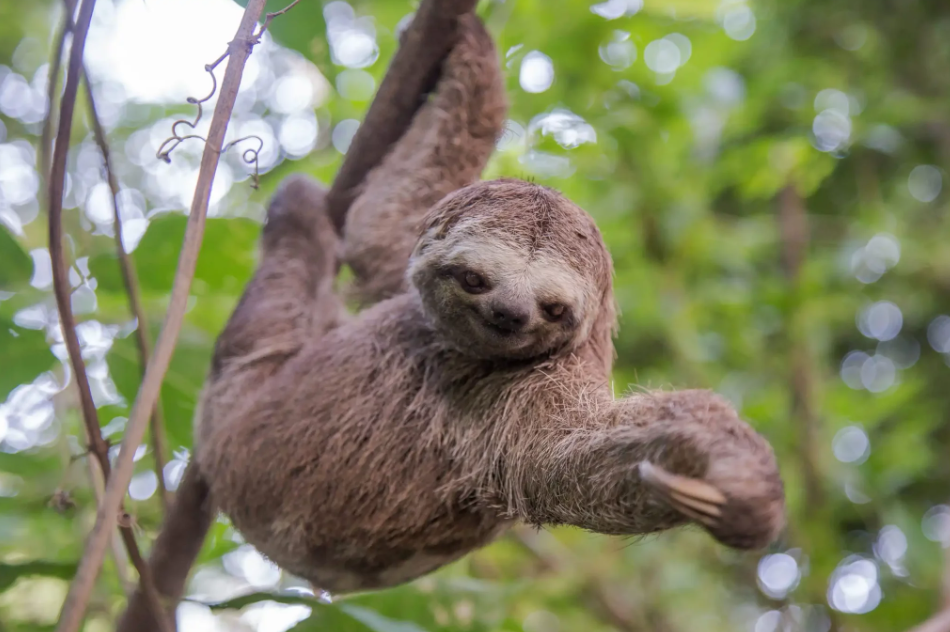
Sloths are mammals known for their relaxed pace of life spent hanging upside down from tree limbs. These animals have a slow metabolism, allowing waste expulsion around once weekly. Sloths are usually nestled high among the treetops, often seen while resting. As solitary creatures, they favor a solitary life over social contact. They can regularly be spotted in nations such as Brazil and Peru.
Giant River Otter
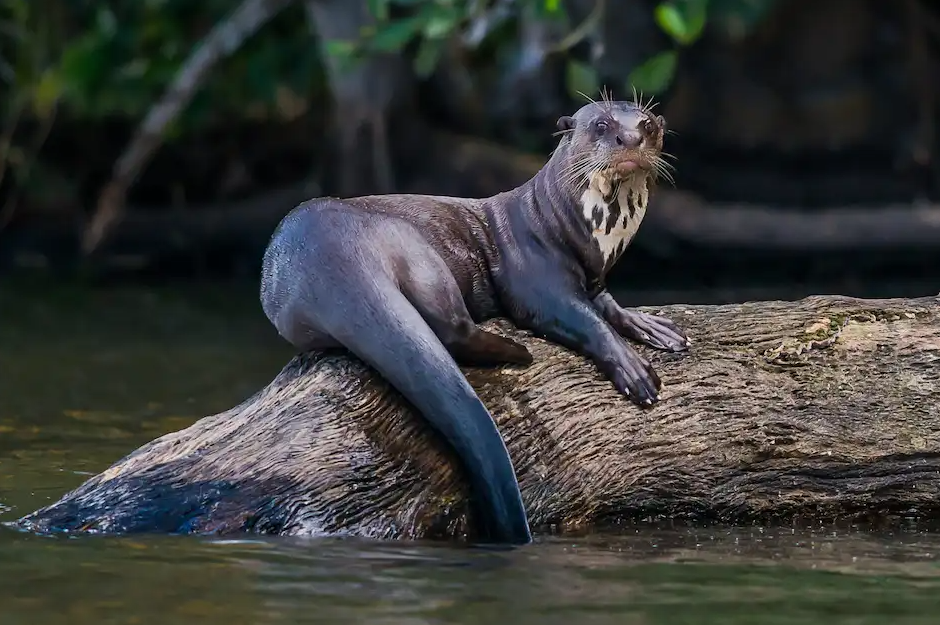
The giant river otter is Earth’s most prominent otter type, with someone reaching lengths up to 5.9 feet long. These beings are inherently communal and live in familial organizations, speaking amongst themselves through diverse vocal communications. These obscure otters inhabit the streams and watercourses of the Amazon. Their spread is mainly within nations like Brazil and Peru.
Tapir
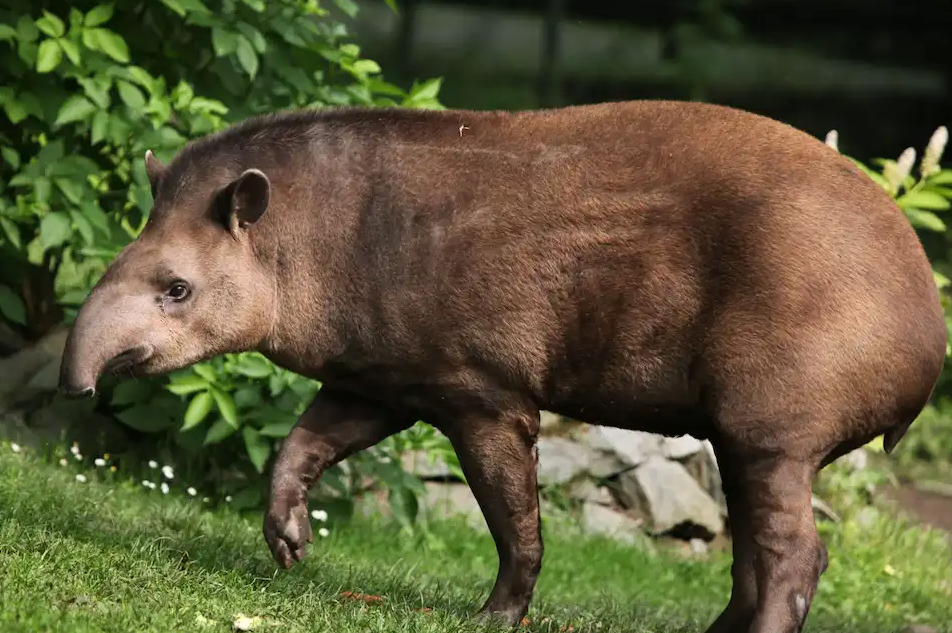
The tapir, a sizable plant-eating mammal, is distinguished for its versatile upper lip, which it uses skillfully to gather flora. These creatures commonly live alone and are renowned for their remarkable sense of smell—the natural homes of tapirs spread across South American nations such as Brazil, Peru, and Colombia.
Spider Monkey
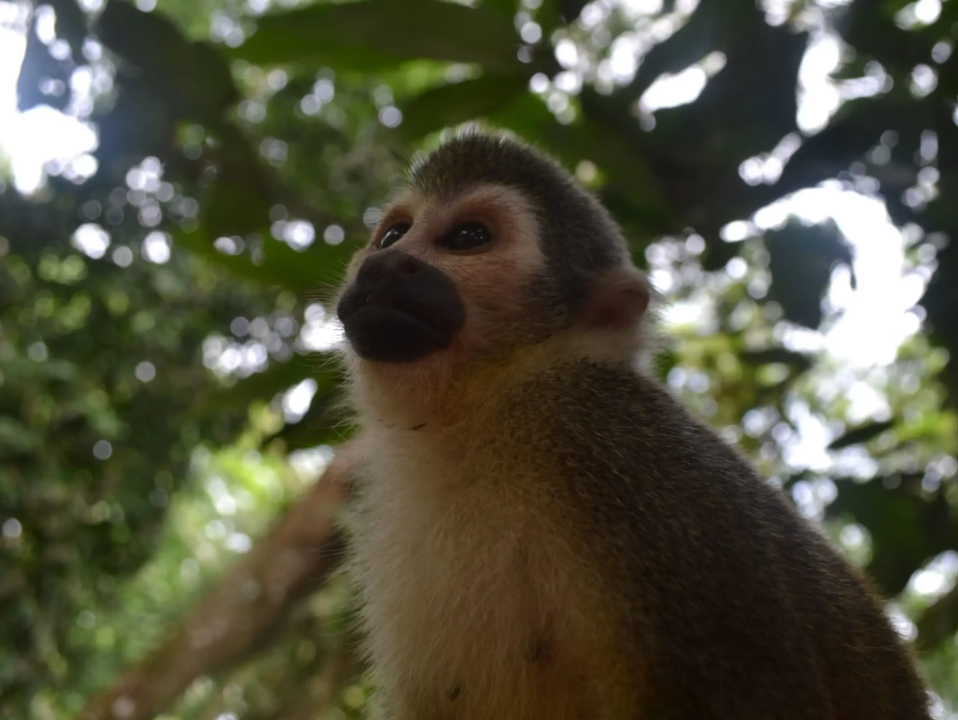
Spider monkeys, who belong to the genus Ateles, are graceful animals known for their lengthy limbs and prehensile tail, which they employ to cling to trees and swing across the foliage overhead. These creatures are sociable by their very nature and converse with one another through various sounds and body language. Spider monkeys call a vast region stretching from northern Mexico in the north to Bolivia in the south their home, and this region incorporates nations such as Brazil, Peru, Ecuador, and Colombia. Notably, seven living spider monkey types have unique traits and adaptations.
Anteater
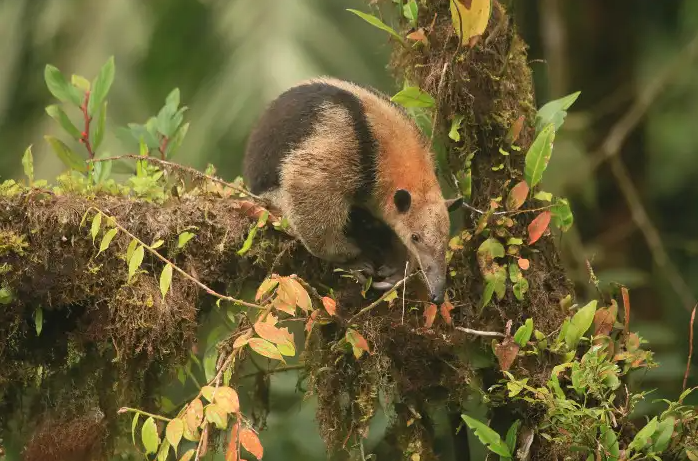
The anteater, a peculiar creature known for its appearance, mainly feeds on insects like ants and termites. They have an elongated snout and a long tongue that can reach up to 24 inches, permitting them to delve into insect burrows effortlessly. In nature, these animals are primarily solitary, preferring to roam and forage alone rather than in packs. Aardvarks have a widespread geographic distribution in Central and South America, encompassing nations including Brazil, Peru, and Colombia. Notably, four types of aardvarks exist, each with traits and adaptations.
Harpy Eagle
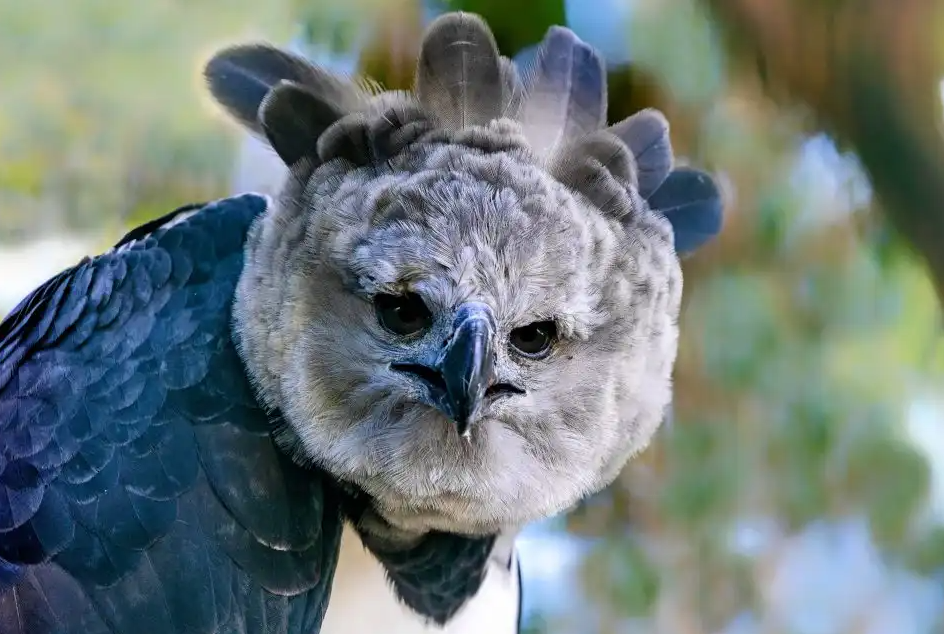
The harpy eagle, one of Earth’s most formidable avian predators, can reach impressive heights of nearly 3 feet. This majestic raptor has a wingspan that may extend to over six and a half feet, granting it remarkable flight abilities. When airborne, harpy eagles can reach 50 miles per hour. These birds of prey inhabit various tropical rainforests across Central and South America, including Brazil, Peru, and Colombia. Notably, the harpy eagle sits at the top of local food chains with few natural adversaries, playing a vital role in maintaining balanced prey populations like monkey and sloth species.
Electric Eel
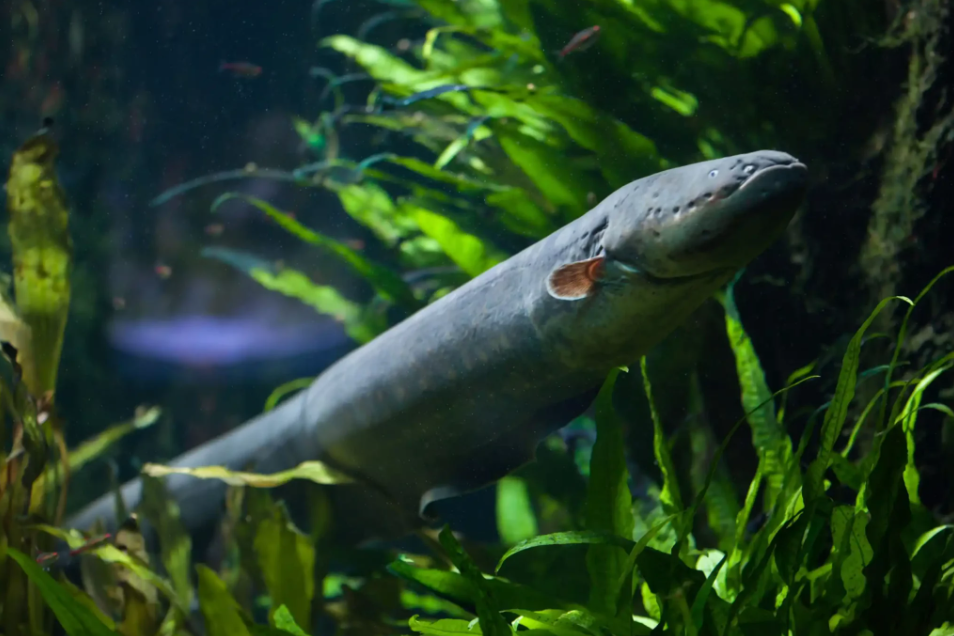
Despite what its name may imply, the electric eel is not truly an eel but rather a knifefish species. This fascinating aquatic creature is renowned for its ability to generate powerful electrical bursts reaching up to 800 volts. These shocks are mainly utilized for hunting prey and self-protection, as they can stun wildlife and deter would-be predators. Electric eels can achieve lengths approaching 8 feet. They inhabit the neotropical freshwater ecosystems of South America, chiefly residing in the murky waters of the Amazon River and its many tributaries winding through countries such as Brazil, Peru, and Colombia.
Poison Dart Frog

The poison dart frog is a small, vibrantly-hued amphibian known for secreting toxins from its skin as a defense mechanism against predators. These frogs are native to Brazil, Peru, and Colombia.
Green Iguana
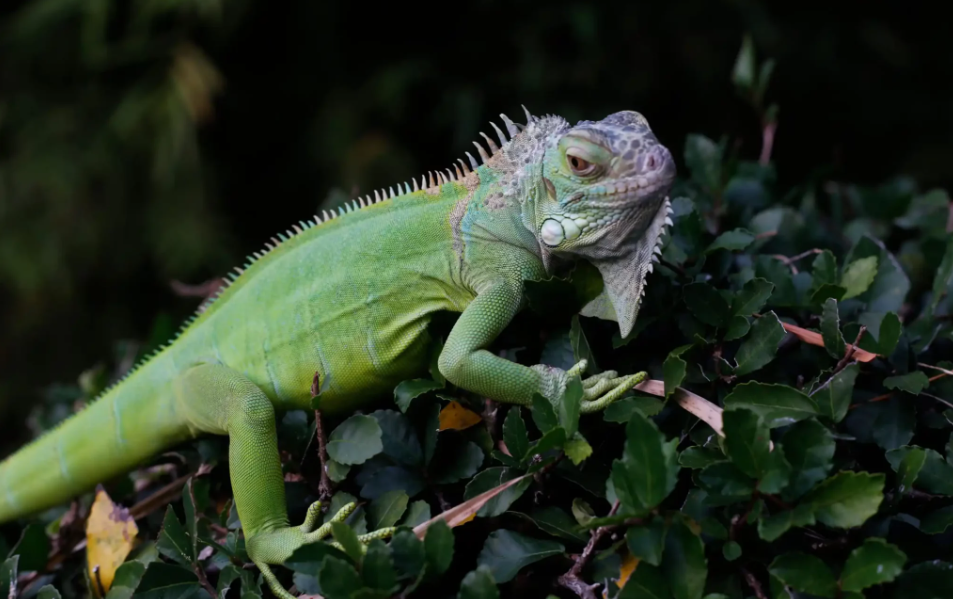
The green iguana is a large, tree-dwelling lizard that can grow up to 2 meters long. This herbivorous creature can alter its skin color for body temperature regulation. These prevalent reptiles inhabit the Amazon rainforest and are frequently spotted basking on rocks and logs. Their geographical distribution includes countries such as Brazil, Peru, and Colombia.
Red-Bellied Piranha
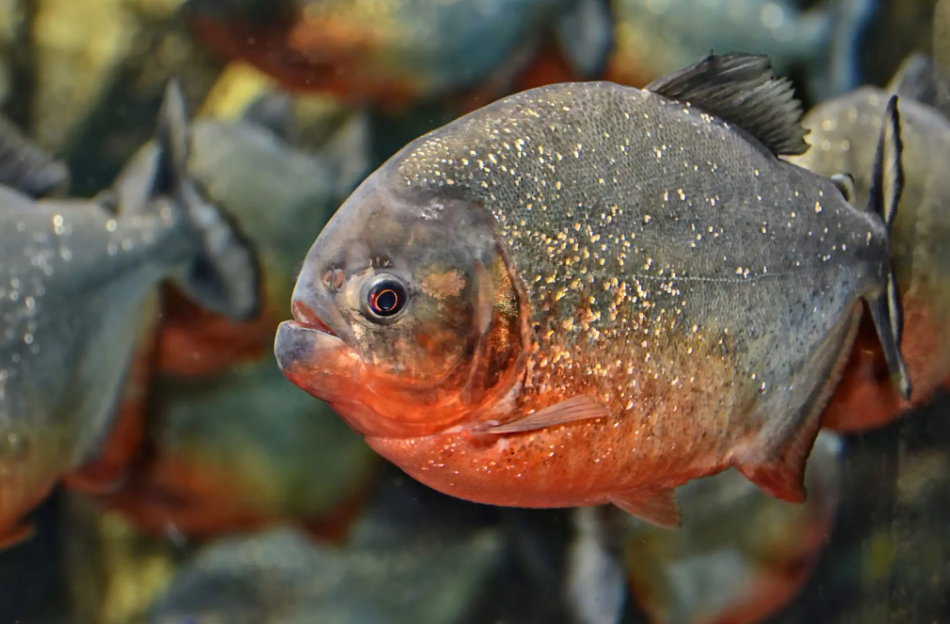
The red-bellied piranha is a carnivorous fish typically weighing up to 1.4 kilograms. They possess a formidable set of sharp teeth capable of crushing bones. Their geographical distribution includes countries such as Brazil, Peru, and Colombia.
